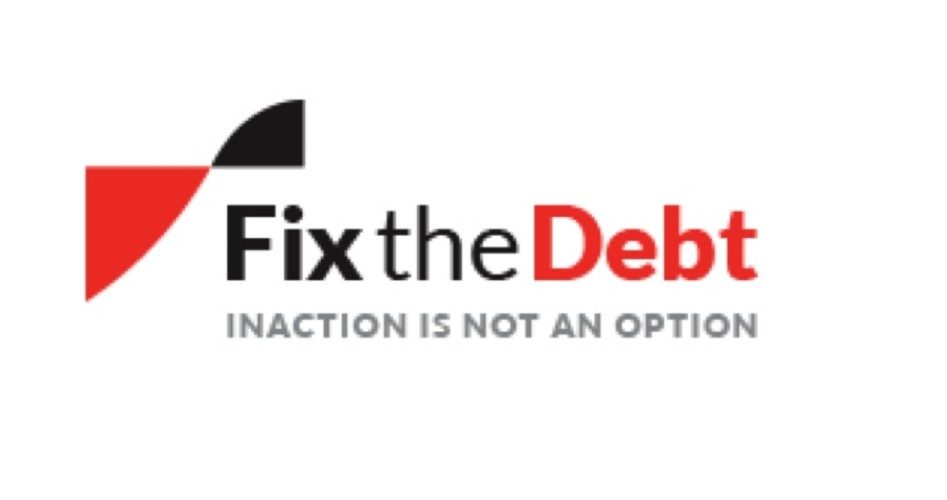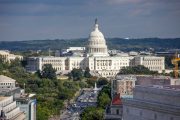
Two government reports issued in the last few days show that despite higher tax revenues, thanks to the tax increases signed into law by the president earlier this year, deficits are still sky-high and the national debt continues its inexorable climb into the stratosphere.
Although the deficit for the first 11 months of the 2013 fiscal year was down slightly compared to last year at this time, real progress toward a balanced budget remains elusive. Through August the federal government spent $3.2 trillion while tax revenues rose by $285 billion, to $2.5 trillion, leaving a deficit of $755 billion. According to the Treasury Department, this is the highest level of revenues the government has collected in any of the last 16 years, with one exception (2007). The increased revenues came from the law that increased the top income tax rate from 35 to 39.6 percent, the top tax rate on dividends and capital gains from 15 to 20 percent, and the phasing out of some personal exemptions and deductions for those earning $250,000 a year or more.
Despite the huge increase in revenues, however, the national debt continues to climb, according to the Congressional Budget Office (CBO). The debt is now 73 percent of the nation’s gross domestic output of goods and services — the highest in history (except for a brief period during World War II) and twice what it was just six years ago. The CBO estimates that unless “significant changes” are made to tax and spending policies, the national debt will soon exceed 100 percent and could go to 200 percent if the current sequester is repealed.
One of many failed attempts to rein in government spending was the effort by former Senator Alan Simpson and the former director of the Small Business Administration (SBA) in the Clinton administration Erskine Bowles, who headed up the National Commission on Fiscal Responsibility and Reform (NCFRR) back in 2010. That commission was created by executive order from the White House and wound up deadlocked in December 2010 when only 11 of its 18 members could agree on the strategy to close the deficit and reduce the national debt.
For a time there was much public discussion, and much heated pushback, about the strategies proposed to accomplish the task. Originally touted as a way to reduce the deficit by $4 trillion over the next 10 years, reform Social Security, and simplify the tax code, it was revealed as just another tax increase all dressed up to look like a reduction in government spending. Revenues would rise from 14.9 percent of GDP in 2010 to 19.3 percent in 2015, and would reach 21 percent by 2035.
As one of those on the commission who opposed the plan, Senator Dave Camp (R-Mich.) concluded:
I cannot support the [commission’s] proposal…. By broadening the base and lowering [tax] rates, the proposal would impose higher taxes to cover higher [government] spending. These tax increases would impact the economic growth we need to create jobs in this country.
A spokesman for Americans for Tax Reform (ATR) put it more bluntly: “The Simpson-Bowles plan is a $5 trillion net tax hike [during] the first full decade of its implementation.”
Although the NCFRR proposal never saw the light of day, a slightly modified version did make it to the floor of the House in March of 2012, where it was soundly beaten by a vote of 382 to 38.
Since then the dynamic duo, Simpson and Bowles, have founded two tax-raising entities that also initially appear to reduce government spending and deficits and the national debt painlessly: the Moment of Truth Project and the Campaign to Fix the Debt. Both are designed to enlist public support for higher taxes.
A close look at the Campaign to Fix the Debt reveals an extraordinary lack of transparency about its real agenda. It begins by reiterating the report from the CBO: “Today [the national] debt is more than 70 percent of our economy [and] is set to rise even after the economy recovers from the recent downturn. The debt is on track to exceed 100 percent of the economy over the next decade and exceed 200 percent by the 2040s.”
After reviewing the consequences of such massive increases, Fix the Debt proposes its plan, noting that it must first “stabilize” the national debt as a share of the economy and then put it on “a clear downward path.” Such a plan “can reverse all of the negative economic and generational consequences of [this] elevated and rising debt.”
The first giveaway as to what’s afoot is revealed: “A credible plan could help strengthen the recovery by improving confidence and reducing uncertainty, even if savings don’t start until after the recovery.” Translation: Deficits must increase first before they can be allowed to decrease.
The agenda is further exposed under the “core principles” espoused by Fix the Debt: “The plan should … include comprehensive and pro-growth tax reform, which broadens the base, lowers rates, raises revenues, and reduces the deficit.” (Emphasis added.)
All of this must be uncovered at its website. For public relations purposes, however, Fix the Debt is much more opaque. With the help of the Christian Science Monitor, the group offers “4 ways you can influence the debt debate” including signing their petition.
The petition is a rehash of the failed Simpson-Bowles fiasco from 2010:
The United States needs a comprehensive plan;
The U.S. debt is over $16 trillion and growing;
Fixing the debt must be phased in gradually to protect the fragile economic recovery;
Rigid ideologies must be put aside;
A solution will require some sacrifice from all Americans; and
The solution must address all parts of the budget.
In other words, tax increases must be part of closing the deficit and reducing the national debt. Ideology, presumably such as following the Constitution, must be put aside for the greater good of the greater number, no doubt. All parts of the budget, including the revenue side, must be addressed, and everyone will have to sacrifice.
This is the mantra of those who have put the taxpayer at such risk over the years. A brief look at the people behind Fix the Debt reveals statists and big-spending liberals who would love nothing more than to increase taxes still further to fund their welfare state. Behind the scenes at Fix the Debt, for example, are former Senator Judd Gregg (R-N.H.), with a Freedom Index rating of 61 (out of 100); former Pennsylvania Governor Ed Rendell, who served as the general chair of the Democratic National Committee during the 2000 president election; New York City Mayor Michael Bloomberg, known as the “nanny mayor” and one of the deep pockets behind the anti-gun movement; Senator Kent Conrad (D-N.D.), with a Freedom Index rating of a dismal 21; former Senator Pete Domenici (R-N.M.) with an FI of 52; former representative Vic Fazio (D-Calif.), who served as the vice chair of the Democratic Caucus in the House for five years; Michael Peterson, president of the Peter G. Peterson Foundation, who was active in both the Clinton and Dukakis presidential campaigns; Steven Rattner, who manages Michael Bloomberg’s personal and philanthropic assets; Alice Rivlin, former director of the Office of Management and Budget in the Clinton administration; Antonio Villaraigosa, former mayor of Los Angeles and chairman of the 2012 Democratic National Convention; former liberal Senator Tim Wirth (D-Colo.), who served as president of the United Nations Foundation; and Robert Zoellick, former vice chairman at Goldman Sachs and former president of the World Bank.
Let’s face it. Fix the Debt is simply a front group for big-spending liberals and statists who wish to appear to be interested in cutting government spending, reducing the deficit, and reining in the national debt. Happily, in the years since the failure of Simpson-Bowles and the start of the Moment of Truth Project and the Campaign to Fix the Debt, fewer than 400,000 uninformed individuals have signed the petition. Despite the big push, the message from them appears to be falling on deaf ears.
A graduate of Cornell University and a former investment advisor, Bob is a regular contributor to The New American magazine and blogs frequently at www.LightFromTheRight.com, primarily on economics and politics. He can be reached at [email protected]

